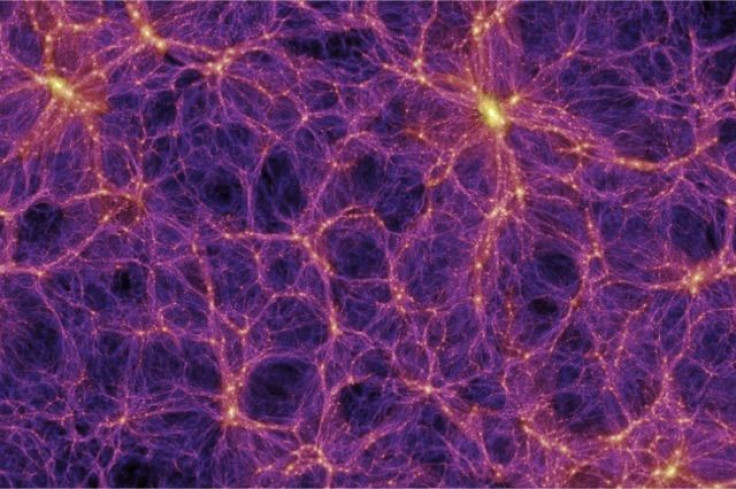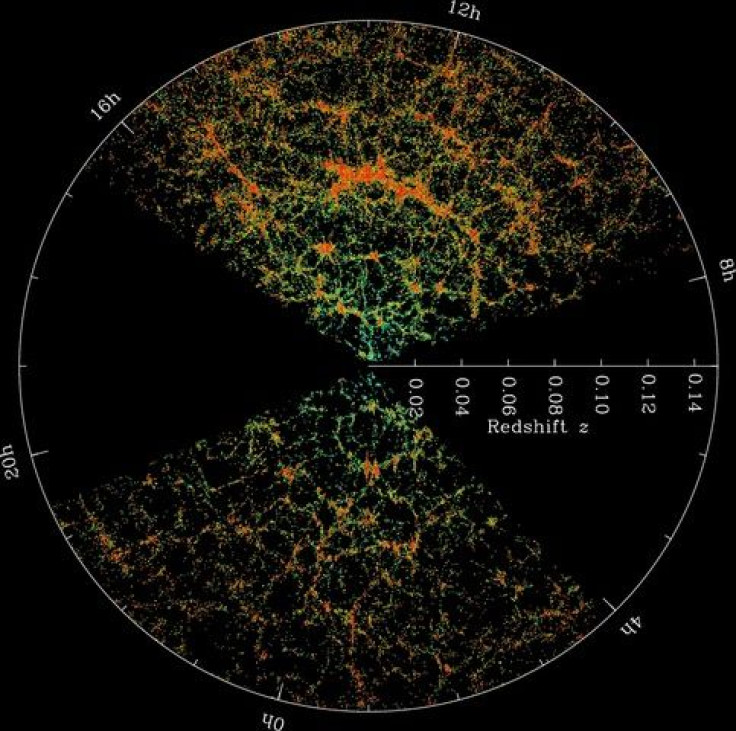On A Cosmic Real Estate Scale, Milky Way Lies In A Sparsely Populated Region

To think of the structure of the universe, and the distribution of matter within it, picture a chunk of Swiss cheese and its holes. Think of all the solid parts as all the invisible and unobservable dark matter and dark energy, while the holes — about 5 percent of the total — contain most visible matter. Add some veins between the holes, and those are like the filaments in space, making up the rest of the visible matter.
There is a considerable difference between the density of matter among different holes, which are called voids, in cosmic terms. Some of these voids are densely packed with matter — like the regions where the brightest galaxies reside — and there are other parts that are more scantily filled, such as the one we live in.
Our home galaxy, Milky Way, is situated in a large void known as KBC — short for Keenan, Barger, and Cowie. Amy Barger and Ryan Keenan from the University of Wisconsin-Madison, and Lennox Cowie from the University of Hawaii had shown in 2013 the location of our galaxy in the void. A new study by an undergraduate student under Barger provides further evidence of our being situated inside KBC and also helps reduce the variations among different measurements of the Hubble Constant.
Based on the 2013 observations, KBC has a radius of about 1 billion light-years, which is about seven times larger than the average void. It is the largest void known yet, is shaped like a sphere and its shell — which increases in thickness — is made up of stars, galaxies, and other matter. Observations made by Ben Hoscheit, the Wisconsin student, were presented Tuesday at the ongoing spring meeting of the American Astronomical Society, and they showed that earlier estimations made by Keenan were not ruled out.
“It is often really hard to find consistent solutions between many different observations. What Ben has shown is that the density profile that Keenan measured is consistent with cosmological observables. One always wants to find consistency, or else there is a problem somewhere that needs to be resolved,” Barger said in a statement Tuesday.

Another place that Hoscheit’s observations are bringing a measure of consistency is the value of the Hubble Constant, which is the unit to describe the rate of expansion of the universe. Two different techniques are used by astrophysicists to measure the Hubble Constant, one of which involves supernovae explosions and the other requires studying the Cosmic Microwave Background. A void, with a lot less matter inside than outside it, will affect the measurement of the Hubble Constant when using the supernova technique while using the CMB technique will not distort the measurement.
“No matter what technique you use, you should get the same value for the expansion rate of the universe today. Fortunately, living in a void helps resolve this tension,” Hoscheit said in the statement.
© Copyright IBTimes 2024. All rights reserved.











